Árbol de la Suerte - Descubre Cómo Cuidar una Planta de Jade
La planta conocida como árbol de la suerte, árbol del dinero, planta del dinero o planta de jade no es otra cosa que Crassula ovata. Últimamente es muy popular y se puede encontrar en muchas casas. La planta de jade no sólo tiene un aspecto estupendo, sino que además no es muy exigente. Todo lo que necesita es un cuidado estándar, y la Crassula ovata mantendrá su aspecto y su color verde muy saturado. ¿Se pregunta si el árbol de la suerte es para usted? Consulta la información más importante.
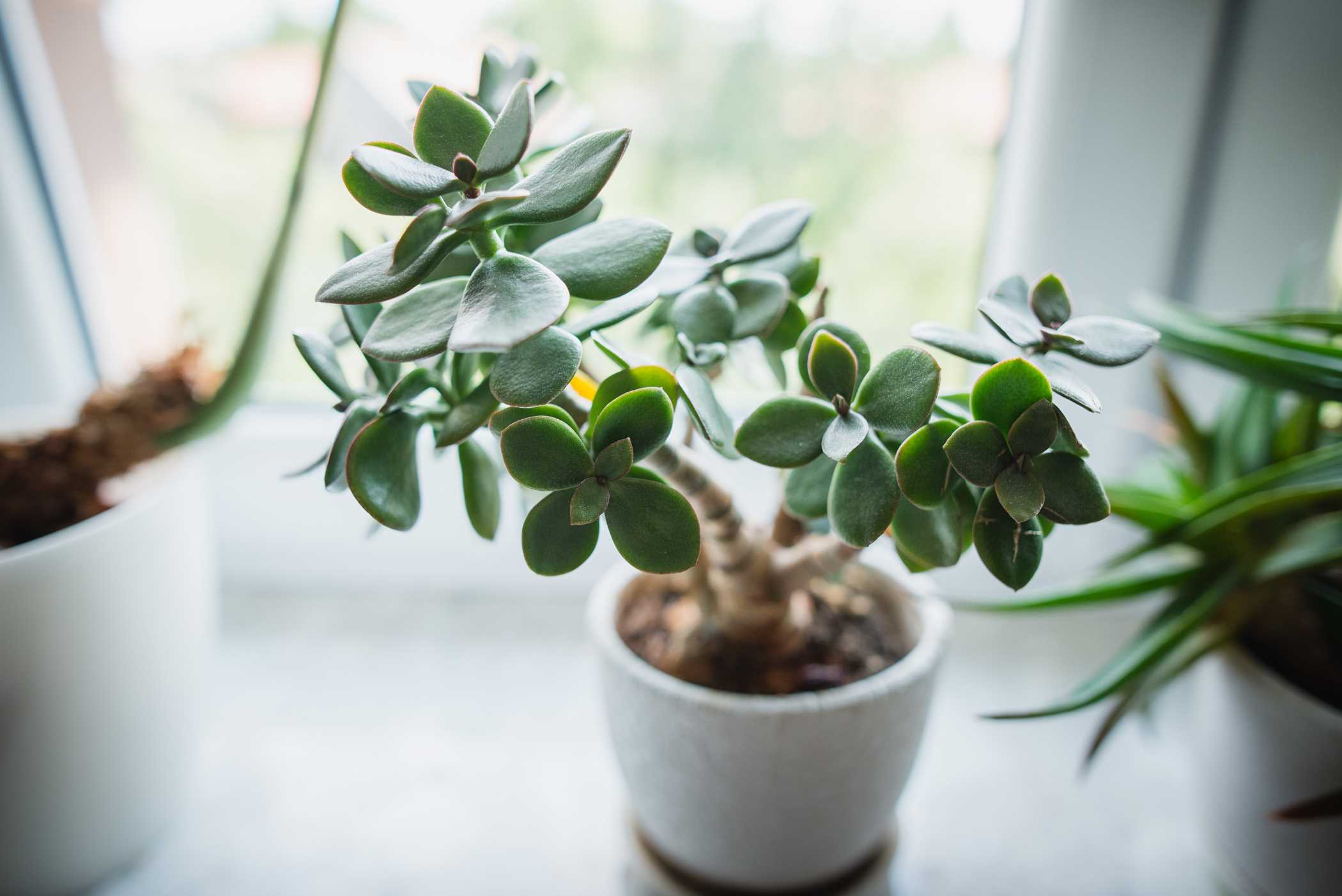
¿Qué es el árbol de la suerte - también conocido como planta de jade?
La planta de jade cuenta con unos cientos de especies en todo el mundo. La Crassula ovata y la Crassula arborescens son las más populares. Esta suculenta suele llamarse planta de la suerte o árbol del dinero. A veces, la planta de jade se confunde con un bonsái, aunque, debido a su forma y a su lento crecimiento, es posible, de hecho, formar esta planta como un árbol de bonsái.
La Crassula ovata se caracteriza por sus ramas gruesas y sus hojas de aspecto inusual. Estas últimas tienen un color muy intenso y saturado. Dependiendo del método de cuidado, el dichoso árbol puede crecer hasta 1 metro de altura.
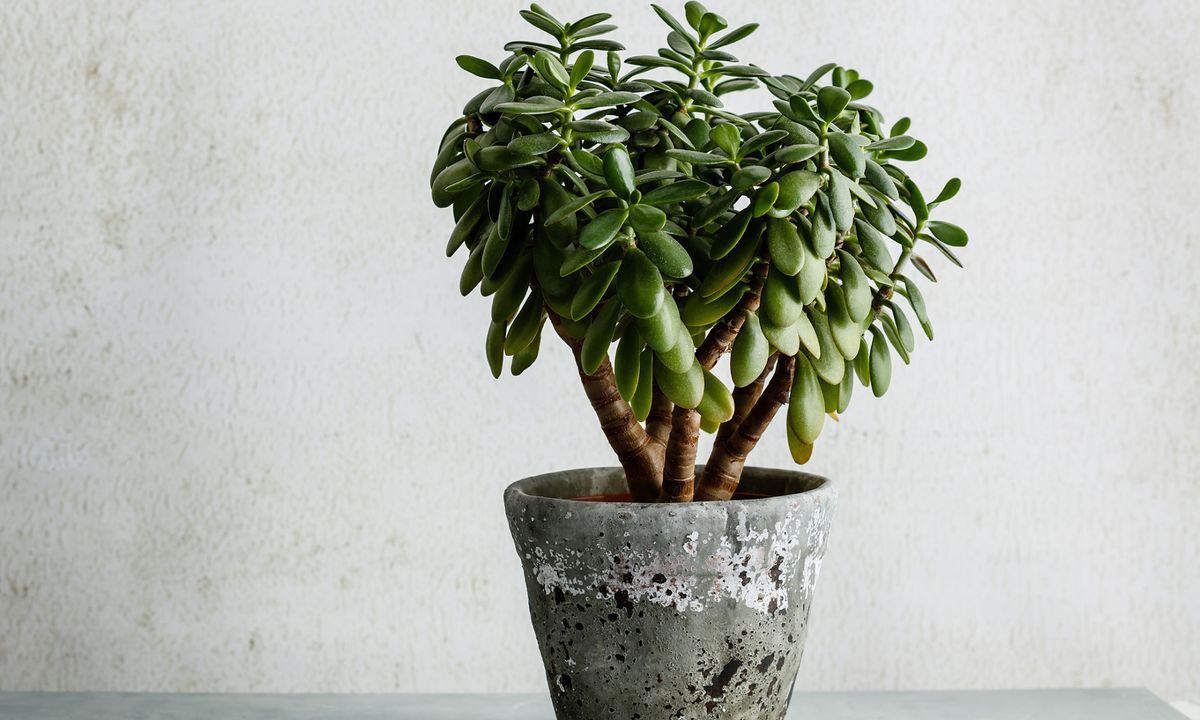
¿Cuáles son los tipos de plantas de jade?
Crassula ovata es la especie más popular de la planta de jade. **Sus nombres comunes están directamente relacionados con la forma característica de las hojas. De ahí que a veces se le llame el árbol del dinero.
Aparte de eso, se pueden encontrar varios tipos de plantas de jade, por ejemplo:
- Crassula ovata ‘Hobbit’ (‘Shrek Ears’)
- Crasula ovata ‘Sunset’ (puesta de sol)
- Crasula ovata ‘Tricolor
- Crasula ovata ‘Gollum’.
- Crassula ovata ‘Gandalf’
No hay que olvidar que muchas de esas especies crecen muy altas en condiciones naturales. Algunas de ellas, como destacan los especialistas, pueden llegar a los impresionantes 4 metros. Pero cuando se cultivan como plantas de interior, no son tan grandes, así que no tienes que preocuparte de que no quepan en tu casa.
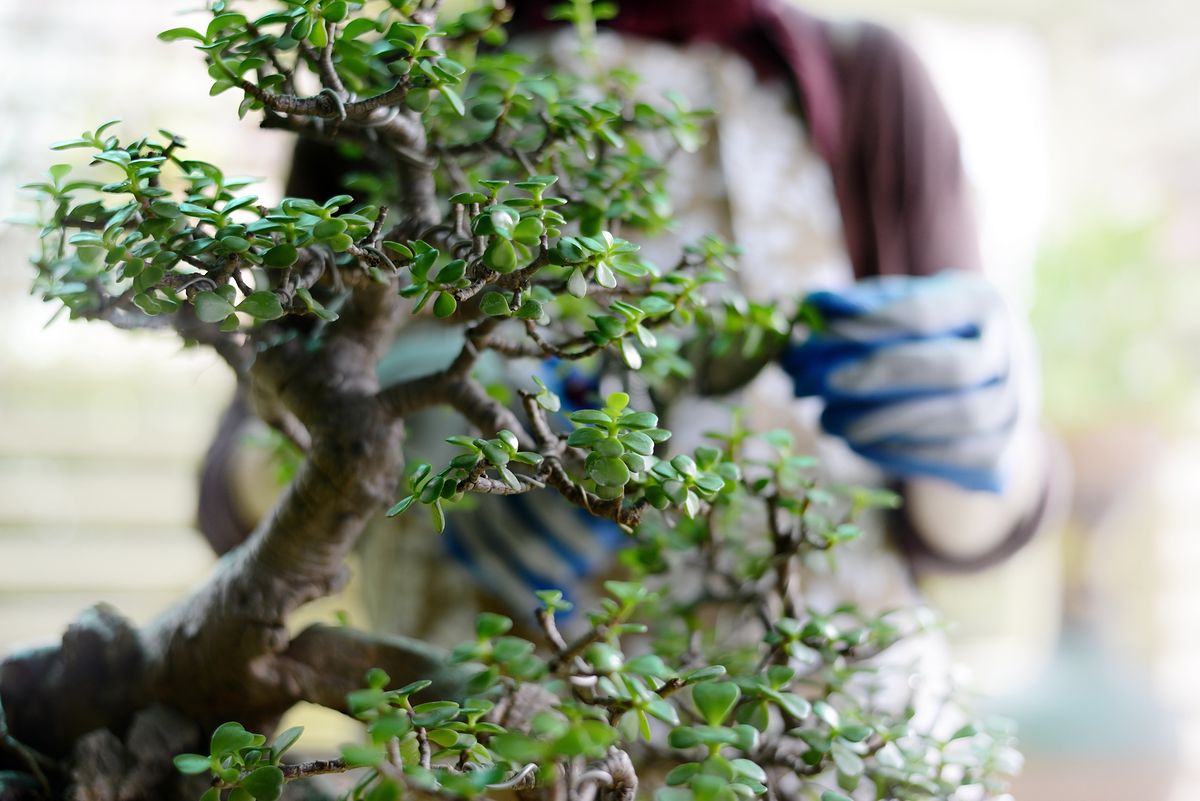
Cuidado de la planta de jade: ¿cómo hacerlo?
La planta de jade es una planta perfecta para aquellos que acaban de empezar su aventura con las plantas, y todo lo que habían cultivado hasta ahora eran hierbas frescas en el alféizar de la cocina. La planta de jade no es muy exigente. Sólo necesita acceso a la luz solar y un poco de agua, mejor si es filtrada.
Un riego demasiado intenso es la mayor amenaza para una planta de jade. Por tanto, no seas demasiado entusiasta en este asunto. Suministre agua a la planta sólo cuando note que la tierra se ha secado.
Si quieres que la planta tenga un aspecto bonito, puedes abonarla una vez al mes o cada dos meses. Los productos para suculentas son la mejor opción, en este caso. Asegúrate de que contienen fósforo y potasio.

¿Se puede recortar el árbol de la suerte?
La planta de jade se puede recortar sin problemas - es el método más común para formar la planta. Pero hágalo más bien como tratamiento cosmético. La Crassula ovata es una planta de crecimiento lento. Si corta demasiadas ramas, tendrá que esperar mucho tiempo hasta ver los resultados deseados.
La primavera es la mejor época para podar el árbol de la suerte. De este modo, puede contar con un crecimiento mucho más rápido que durante otras estaciones.
¿Cuándo y cómo florece la planta de jade?
Por desgracia, la mayoría de los propietarios de plantas de jade nunca han visto florecer su planta. El árbol de la suerte es bastante caprichoso y raramente florece. Necesita muy buenas condiciones para crecer, e incluso con ellas, no se puede asegurar que vaya a florecer alguna vez.
Si tienes mucha suerte y tu planta de jade florece, puedes esperar pequeñas flores rosadas. Las flores de la planta de jade suelen aparecer entre el otoño y el invierno. Es difícil perder el momento.

¿Cómo replantar la planta de jade?
La planta de jade no necesita un trasplante regular. Normalmente, se hace una vez cada varios años, lo que es más que suficiente. Esto se debe a que el árbol de la suerte no crece demasiado rápido, y las raíces no se extienden tanto.
Quienes cultivan plantas de jade de forma profesional se han dado cuenta de que el árbol de la suerte crece más rápido si sus raíces se colocan en un recipiente pequeño. Por esta razón, no hay que trasplantarlo con demasiada frecuencia.
En cuanto a las condiciones de la nueva maceta, se necesita el tipo de tierra adecuado. La mezcla de tierra para cactus es la mejor opción.
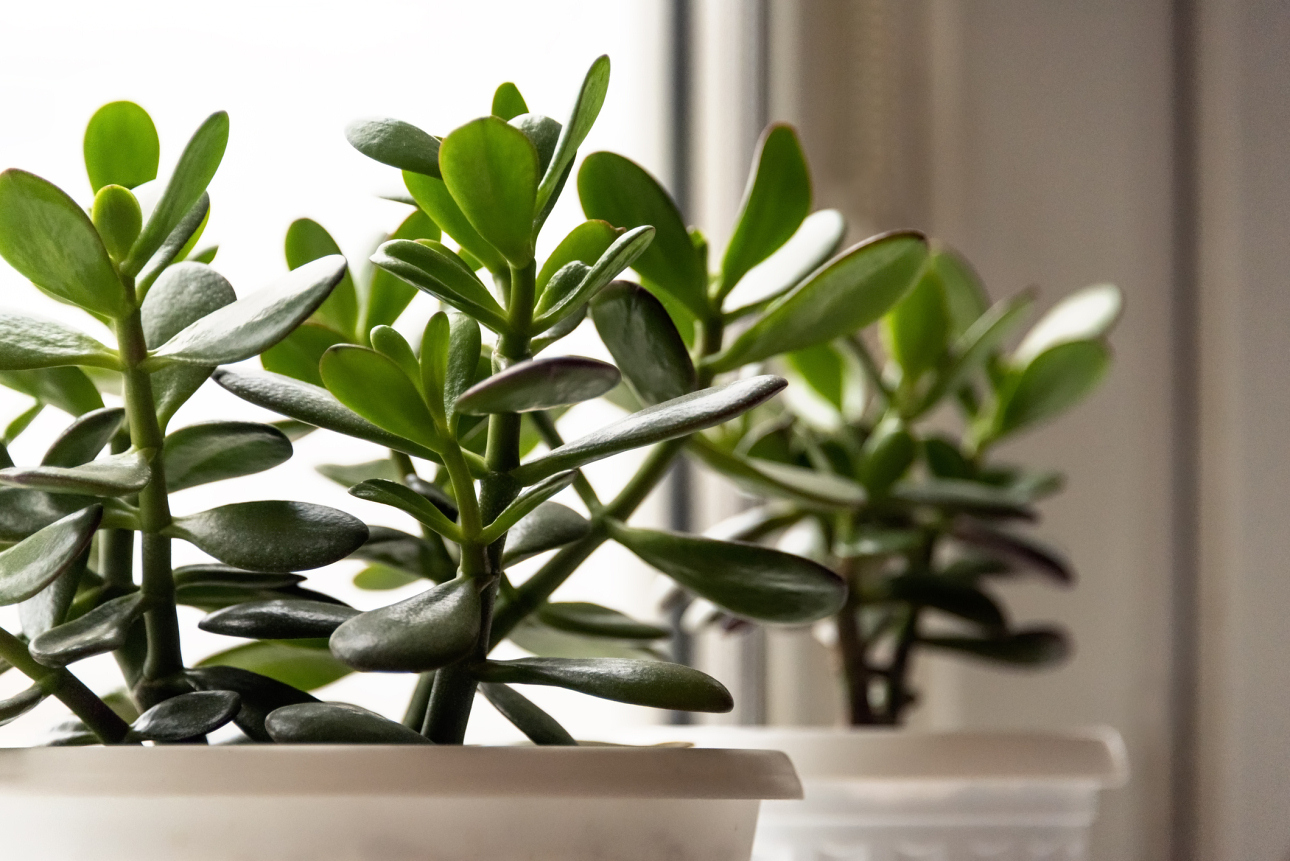
¿Es la planta de jade propensa a las enfermedades?
El árbol de la suerte es una planta bastante duradera y no es propensa a las enfermedades. El único peligro es el exceso de humedad. En este caso, notarás que las hojas se caen, lo que es una señal de preocupación.
La planta de jade también puede ser atacada por plagas. **Los insectos escamosos son los más peligrosos. Puedes notar su presencia si las hojas se vuelven repentinamente pegajosas. Si es así, lávalas con agua y jabón doméstico.
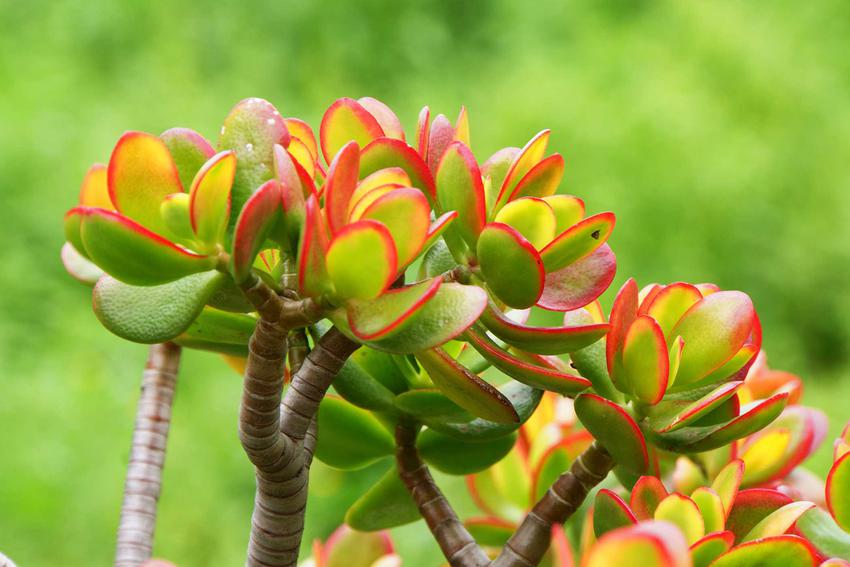
📍 ¿Cómo cuidar una planta de jade?
El cuidado de la planta de jade no es muy complicado, pero requiere regularidad. El árbol de la suerte necesita mucha luz solar, y no le importa una exposición a pleno sol. El lado sur reúne las mejores condiciones para la Crassula ovata. La planta acumula agua en sus hojas, así que no la riegue con demasiada frecuencia, sólo una vez al mes.
📍 ¿Cómo se recorta una planta de jade?
La planta de jade crece muy lentamente, pero el recorte no es un problema. Después de cortarla, desarrolla nuevas hojas y los brotes son mucho más flexibles que antes de cortarla. Recortar un árbol de la suerte es beneficioso para su salud y ayuda a darle forma.
📍 ¿Cómo dar forma a una planta de jade?
Se recomienda dar forma a la planta de jade justo después de recortarla. Cuando le des la forma adecuada, sujeta la planta con un alambre o un trozo de cuerda. Asegúrate de hacerlo con mucha delicadeza para no dañar la Crassula ovata.
Artículos destacados




